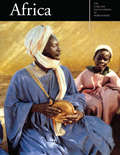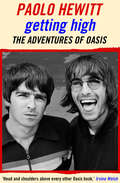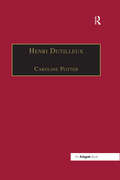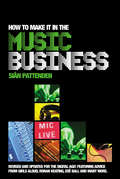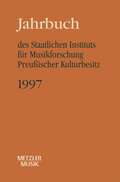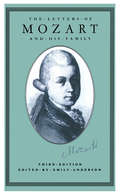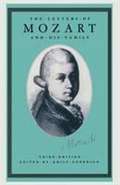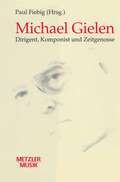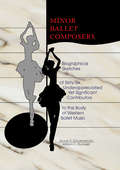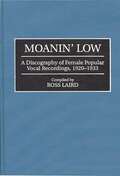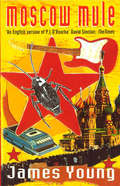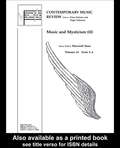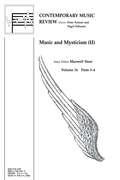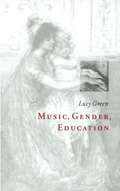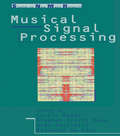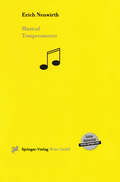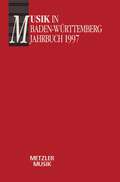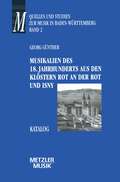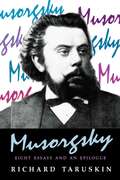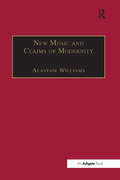- Table View
- List View
The Garland Encyclopedia of World Music: Africa (Garland Encyclopedia of World Music)
by Ruth M. StoneExplores key themes in African music that have emerged in recent years-a subject usually neglected in country-by-country coverageemphasizes the contexts of musical performance-unlike studies that offer static interpretations isolated from other performing traditions presents the fresh insights and analyses of musicologists and anthropologists of diverse national origins-African, Asian, European, and AmericanCharts the flow and influence of music. The Encyclopedia also charts the musical interchanges that followed the movement of people and ideas across the continent, including: cross-regional musical influences throughout Africa * Islam and its effect on African music * spread of guitar music * Kru mariners of Liberia * Latin American influences on African music * musical interchanges in local contexts * crossovers between popular and traditional practices. Audio CD included. Also includes nine maps and 96 music examples.
The Garland Encyclopedia of World Music: Africa (Garland Encyclopedia of World Music)
by Ruth M. StoneExplores key themes in African music that have emerged in recent years-a subject usually neglected in country-by-country coverageemphasizes the contexts of musical performance-unlike studies that offer static interpretations isolated from other performing traditions presents the fresh insights and analyses of musicologists and anthropologists of diverse national origins-African, Asian, European, and AmericanCharts the flow and influence of music. The Encyclopedia also charts the musical interchanges that followed the movement of people and ideas across the continent, including: cross-regional musical influences throughout Africa * Islam and its effect on African music * spread of guitar music * Kru mariners of Liberia * Latin American influences on African music * musical interchanges in local contexts * crossovers between popular and traditional practices. Audio CD included. Also includes nine maps and 96 music examples.
Getting High: The Adventures of Oasis
by Paolo HewittDescription Between 1994 and 1996, music writer Paolo Hewitt spent the greater part of his life on the road with Oasis, in the U.K., Europe and America. He came back with tales that would cement the legend of the brawling, effing, hedonistic, charismatic, confessional and extraordinarily talented Gallagher brothers, Noel and Liam, and their group. Hewitt is a rare and perceptive fly-on-the-wall during the band's hectic rise to the height of their powers, as their first two albums are released to the kind of excitement scarcely seen in British rock music since the sixties. Hewitt takes the Gallaghers' story right back to their parents' roots in Ireland, and the descriptions of Noel and Liam's childhoods in working-class Manchester reveal the seeds of their determination to make Oasis the force it became. Getting High is an illuminating, funny, sometimes shocking reminder of how big a band can get, and how quickly the insanity sets in. Oasis have today sold in excess of 70 million records worldwide. Hewitt's intimate account of this explosive and beloved band, in their prime, is a rock classic and a riveting narrative. Praise for Getting High: 'Paolo is the only person to speak about what it was like on the road with us because he's been there. He's been there, he's seen it, he's done it.' Noel Gallagher 'Top read.' Melody Maker 'Unlimited access to all areas of the Oasis bandwagon is the ace up this biography's sleeve.' Q '10/10 - sometimes you get what you pay for.' Esquire 'By adopting a fly-on-the-wall approach and writing Oasis's story as though it were a novel rather than a straight biography, he succeeds in entertaining, informing and occasionally putting you inside the head of the Gallagher brothers.' Hot Press 'In Getting High we get closer to the real Oasis, not the tabloid fancies, the music press stereotypes of Noel the genius, Liam the wanker and three other blokes who don't count. Hewitt paints an engrossing and uplifting portrait of one of the most important bands of the decade.' The Word and Issue 'Getting High is refreshingly well written' Total Guitar 'Compelling drama' Manchester Evening News 'If you only buy one book about Oasis, then make sure it's this one.' FHM 'This well-researched tome chronicles many a pivotal moment in Oasis's history and is filled with plenty of ribald anecdotes.' NME 'Head and shoulders above every other Oasis book. I hated finishing it so much I read it again.' Irvine Welsh
Henri Dutilleux: His Life and Works
by Caroline PotterHenri Dutilleux (born 1916) is one of France‘s leading composers, though until recently his music received more attention in the United States than in Europe. A fiercely independent composer who pursues his own musical path regardless of fashion, he has never courted the public eye, yet in this book he is revealed as a composer very much engaged with the work of other artists from all spheres. Caroline Potter‘s fascinating survey examines the relation of some of these artists to Dutilleux‘s music. In literature, the notions of memory and time found in the writings of Baudelaire and Proust have had profound effects on his compositional development, whilst the visual arts have informed his aesthetic ideas and their expression in both his music and even in his meticulously produced scores. Always a perfectionist, Dutilleux now rejects those earlier works which are not representative of his mature style. By analysing these early pieces, Dr Potter traces the evolution of his musical style, and she investigates his compositional process and use of particular referential devices in later works. Whilst his music is unequivocally of our time, Dutilleux has never lost the ability to communicate with a wide-ranging audience. Drawing on interviews with the composer, this study provides penetrating insights into this complex composer‘s musical world.
Henri Dutilleux: His Life and Works
by Caroline PotterHenri Dutilleux (born 1916) is one of France‘s leading composers, though until recently his music received more attention in the United States than in Europe. A fiercely independent composer who pursues his own musical path regardless of fashion, he has never courted the public eye, yet in this book he is revealed as a composer very much engaged with the work of other artists from all spheres. Caroline Potter‘s fascinating survey examines the relation of some of these artists to Dutilleux‘s music. In literature, the notions of memory and time found in the writings of Baudelaire and Proust have had profound effects on his compositional development, whilst the visual arts have informed his aesthetic ideas and their expression in both his music and even in his meticulously produced scores. Always a perfectionist, Dutilleux now rejects those earlier works which are not representative of his mature style. By analysing these early pieces, Dr Potter traces the evolution of his musical style, and she investigates his compositional process and use of particular referential devices in later works. Whilst his music is unequivocally of our time, Dutilleux has never lost the ability to communicate with a wide-ranging audience. Drawing on interviews with the composer, this study provides penetrating insights into this complex composer‘s musical world.
How To Make it in the Music Business
by Siân PattendenThousands of people want to break into the exciting, glamorous and hard-working music industry, but don't know how to go about it. How to Make it in the Music Business is a genuine insider's guide for anybody who wants to become a rock star, journalist, publicist, band manager, DJ, A&R person, songwriter or even a digital whiz kid. Fully updated with new information on the impact of new technology and digital music, this indispensable guide is a must for all budding music biz types.
The Letters of Mozart and his Family
by Wolfgang Amadeus Mozart Stanley Sadie Fiona SmartThis study has been revised to include new finds about the composition dates of several Mozart works. A new bibliography and a collation with the Neue Mozart-Ausgabe edition of letters, edited by O.E.Deutsch, W.A.Bauer and J.H.Eibl: Baerenreiter, 1962-75 is also included.
Letters Of Mozart And His Family (PDF)
by Emily Anderson Wolfgang Amadeus Mozart Stanley Sadie Fiona SmartThis study has been revised to include new finds about the composition dates of several Mozart works. A new bibliography and a collation with the Neue Mozart-Ausgabe edition of letters, edited by O.E.Deutsch, W.A.Bauer and J.H.Eibl: Baerenreiter, 1962-75 is also included.
Michael Gielen: Dirigent, Komponist, Zeitgenosse
Der Band dokumentiert Gielens Arbeit in Wort und Ton. Es enthält zahlreiche Texte und Essays Gielens zur Musikgeschichte des 20. Jahrhunderts.
Minor Ballet Composers: Biographical Sketches of Sixty-Six Underappreciated Yet Significant Contributors to the Body of West
by William E Studwell Bruce R SchuenemanWhile most music lovers are familiar with the famous scores of Tchaikovsky, Delibes, and Stravinsky, many other lesser-known composers also wrote for the ballet. Several of these composers wrote almost exclusively for the ballet--and all enriched the world of dance. Minor Ballet Composers presents biographical sketches of 66 underappreciated ballet composers of the 19th and 20th centuries from around the world, along with selected stories from the ballets they helped create. While the composers’contributions to ballet music are emphasized, all aspects of their lives and works are touched upon. Plot summaries and excerpts from reviews of many of the ballets are also provided. Other topics of interest you’ll find covered in Minor Ballet Composers include: Les Six: Darius Milhaud, Louis Durey, Georges Auric, Arthur Honegger, Francis Poulenc, and Germaine Tailleferre--and their relationship with Erik Satie and Jean Cocteau how politics, revolutions, and wars have affected composers and their works who studied with whom; who collaborated with whom schools, movements, and musical renaissance the importance of opera to ballet music the relationship between film scores and ballet music which books, plays, stories, and folk tales certain ballets are based upon where many of these ballets premieredMinor Ballet Composers emphasizes the importance of second-tier composers and their influence on the rich tradition of music written for the dance (though in some cases the music was appropriated for the ballet from other original designs). The gathering of these composers in a single volume in appreciation of their ballet music, with a glossary of choreographers and an index of ballet titles, makes this book a useful volume for ballet aficionados, music librarians, musicians, and others interested in dance and dance music.
Minor Ballet Composers: Biographical Sketches of Sixty-Six Underappreciated Yet Significant Contributors to the Body of West
by William E Studwell Bruce R SchuenemanWhile most music lovers are familiar with the famous scores of Tchaikovsky, Delibes, and Stravinsky, many other lesser-known composers also wrote for the ballet. Several of these composers wrote almost exclusively for the ballet--and all enriched the world of dance. Minor Ballet Composers presents biographical sketches of 66 underappreciated ballet composers of the 19th and 20th centuries from around the world, along with selected stories from the ballets they helped create. While the composers’contributions to ballet music are emphasized, all aspects of their lives and works are touched upon. Plot summaries and excerpts from reviews of many of the ballets are also provided. Other topics of interest you’ll find covered in Minor Ballet Composers include: Les Six: Darius Milhaud, Louis Durey, Georges Auric, Arthur Honegger, Francis Poulenc, and Germaine Tailleferre--and their relationship with Erik Satie and Jean Cocteau how politics, revolutions, and wars have affected composers and their works who studied with whom; who collaborated with whom schools, movements, and musical renaissance the importance of opera to ballet music the relationship between film scores and ballet music which books, plays, stories, and folk tales certain ballets are based upon where many of these ballets premieredMinor Ballet Composers emphasizes the importance of second-tier composers and their influence on the rich tradition of music written for the dance (though in some cases the music was appropriated for the ballet from other original designs). The gathering of these composers in a single volume in appreciation of their ballet music, with a glossary of choreographers and an index of ballet titles, makes this book a useful volume for ballet aficionados, music librarians, musicians, and others interested in dance and dance music.
Moanin' Low: A Discography of Female Popular Vocal Recordings, 1920-1933 (Discographies: Association for Recorded Sound Collections Discographic Reference)
by Ross LairdThe first comprehensive guide to pre-1934 female popular vocal recordings sung in English—from around the world and including all styles—this discographical study includes solos, duets, trios, and quartets composed by the great songwriters of the early 1900s (from Irving Berlin to Victor Young). The majority of the listings includes material that has not been previously published, and a large number of entries profile such prolific artists as Helen Clark and Gladys Rice, who are not in previous discographies. A special feature includes data on sound-on-disc recording made for early talking-picture musical shorts (especially by Vitaphone) that is not documented elsewhere. A comprehensive title index includes composer credits for the majority of the titles listed.The first comprehensive guide to pre-1934 female popular vocal recordings sung in English—from around the world and including all styles—this discographical study includes solos, duets, trios, and quartets composed by the great songwriters of the early 1900s (from Irving Berlin to Victor Young). The majority of the listings includes material that has not been previously published, and a large number of entries profile such prolific artists as Helen Clark and Gladys Rice, who are not in previous discographies. A special feature includes data on sound-on-disc recording made for early talking-picture musical shorts (especially by Vitaphone) that is not documented elsewhere. A comprehensive title index includes composer credits for the majority of the titles listed.Many of the records documented in this volume are by the artists who introduced these songs at this time or who performed them in the original productions of the shows or movies for which they were written. The singing styles include those of cabaret performers, music-hall and vaudeville acts. Songs for the stage, screen, and radio are also included.
Moscow Mule
by James YoungA marvellously funny and sharply observed account of a journey to Russia by one of Britain's most talented young writers. Moscow - a labyrinth where the humans try to keep one step ahead of the roaches. Everyone on the move, some in search of the quick buck, and others just trying to survive. All dazzled by the neon glare of the western dream. The soviet monolith has broken down in tribalism, tribes who go to war not just on the streets but in overheated rooms, with drugs, vodka and Cindy Crawford carrier bags. James Young gives an unparalleled account of today's Moscow from the bottom side up. He takes us on a odyssey through this strange no man's land where East meets West, where the old certainties have gone, the KGB men wear Italian suits, the Mafia tycoonskis style themselves on the Godfather flicks and the rest are queuing to change dollars.
Music and Mysticism: Parts 3 and 4 (Contemporary Music Review)
by Maxwell SteerThis title available in eBook format. Click here for more information.Visit our eBookstore at: www.ebookstore.tandf.co.uk.
Music and Mysticism: Parts 3 and 4 (Contemporary Music Review)
by Maxwell SteerThis title available in eBook format. Click here for more information.Visit our eBookstore at: www.ebookstore.tandf.co.uk.
Music, Gender, Education (PDF)
by Lucy GreenThis book focuses on the role of education in relation to music and gender. Invoking a concept of musical patriarchy and a theory of the social construction musical meanings, Lucy Green shows how women's musical practices and gendered musical meanings have been reproduced, hand in hand, through history. Covering a wide range of music, including classical, jazz and popular styles, Dr Green uses ethnographic methods to convey the everyday interactions and experiences of girls, boys, and their teachers. She views the contemporary school music classroom as a microcosm of the wider society, and reveals the participation of music education in the continued production and reproduction of gendered musical practices and meanings.
Musical Signal Processing (Studies On New Music Research)
by Curtis Roads Stephen Travis Pope Aldo Piccialli Giovanni De PoliFirst Published in 1997. Routledge is an imprint of Taylor & Francis, an informa company.
Musical Signal Processing
by Curtis Roads Stephen Travis Pope Aldo Piccialli Giovanni De PoliFirst Published in 1997. Routledge is an imprint of Taylor & Francis, an informa company.
Musical Temperaments
by Erich NeuwirthPreface What you are now reading is the written version of an electronic document that explains the mathematical principles for different musical temperaments. The electronic version contains many music examples that you can listen to while you are working with this document at a computer. The written version obviously cannot offer this possibility. It serves therefore merely as a parallel study aid and guide and cannot replace actually working with the electronic text. Musical Temperaments Contents • V II Contents Introduction and Fundamental Properties 1 Pitch and Frequency 1 Preliminary Remarks 1 Frequencies and Intervals 2 Tuning Systems and Frequencies 5 Musical Scales in Different Tunings 5 Pure Tuning 5 Intervals and Triads in Pure Tuning 12 Pythagorean Tuning 23 Intervals and Triads in Pythagorean Tuning 31 Meantone Tuning 34 Intervals and Triads in Meantone Tuning 39 Equal Temperament (Tuning) 42 Intervals and Triads in Equal Temperament (Tuning) 47 Summary 50 Appendices 53 Pictorial explanations 53 Tables of Frequencies and Intervals 54 Operating Instructions 62 Glossary 67 Musical Temperaments Introduction and Fundamental Properties • 1 Introduction and Fundamental Properties Pitch and Frequency Preliminary Remarks It is well known that tones consist of periodically recurring phenomena, that is, beats repeating in a regular pattern. The number of repetitions of beats per second is measured in Hertz: 440 Hertz mean 440 beats per second. This number is also called the frequency of a beat.
Musik in Baden-Württemberg, Band 4: Jahrbuch 1997
by Reiner NägeleAus dem Inhalt: M. Firla berichtet über das Ballett "Atlas Oder die vier Theil der Welt (1681 in Durlach aufgeführt), M.H. Schmid stellt N. Jommellis seinerzeit in unzähligen Abschriften verbreitetes Requiem Es-dur (1756) vor. Die Musik der ehemaligen oberschwäbischen Klöster wird von G. Günther in einem Beitrag über den Klosterkomponisten W. Angeber (Rot an der Rot) berücksichtigt, und A. Dürr nimmt sich der Sinfonien des Donaueschinger Hofkapellmeisters J.W. Kalliwodas an. Anläßlich des Mendelssohn-Jahres 1997 faßt R. Nägele die Rezeptionsgeschichte des Komponisten in Württemberg zusammen. Mit Vertonungen der "Schilflieder" von Lenau (u.a. durch Emilie Zumsteeg) beschäftigt sich M. Wiegand, und Chr. Schmider berichtet über die Versuche, in Freiburg/Br. im frühen 19. Jahrhundert eine Domsingschule einzurichten. Aus neuerer Zeit wird O. Bantel den Komponisten, Dichter und Pädagogen Hermann Ruck (1897-1983) vorstellen, und K. Leitner beschreibt die Entwicklung der Reutlinger Stadtkapelle zum "Reichskulturorchester". Abgeschlossen wird der Band durch die Landesmusikbibliographie 1996, Rezensionen sowie ein Verzeichnis über neue bzw. restaurierte Orgeln in Baden-Württemberg.
Musikalien des 18. Jahrhunderts aus den Klöstern Rot an der Rot und Isny: Katalog. Quellen und Studien zur Musik in Baden-Württemberg, 2
by Georg GüntherIm zweiten Band dieser Reihe werden überwiegend Handschriften kirchenmusikalischer Werke aus der Prämontratenserreichsabtei Rot an der Rot und dem Benediktinerkloster Isny verzeichnet, die sich im Schwäbischen Landesmusikarchiv Tübingen befinden.
Musorgsky: Eight Essays and an Epilogue
by Richard Taruskin"It is [a] fully illuminated story that Richard Taruskin, in the path-breaking essays collected here, unfolds around Modest Musorgsky, Russia's greatest national composer.... [Taruskin's] tour de force comes with a frontal attack on all the Soviet-bred truisms that for a century have refashioned Musorgsky from what the evidence suggests he was--an aristocrat with an early clinical interest in true-to-life musical portraiture and a later penchant for drinking partners who were both folklore buffs and political reactionaries democrat."--From the foreword Incorporating both new and now-classic essays, this book for the first time sets the vocal works of Modest Musorgsky in a fully detailed cultural, political, and historical context. From this perspective Richard Taruskin revises fundamentally the composer's historical and artistic image, in particular debunking the century-old dogmas of Vladimir Stasov, Musorgsky's first biographer. Here the author offers the most complete explanation of the revision of the opera Boris Godunov, compares it to contemporaneous operas by Chaikovsky and Rimsky-Korsakov, advances a revisionary characterization of Khovanshchina as an aristocratic tragedy informed by a pessimistic view of history, discusses Musorgsky's use of folklore, and, focusing on Sorochintsi Fair, brings to a climax his refutation of Musorgsky as a protorevolutionary populist. The epilogue is a survey of revisionary productions of Musorgsky's works at home during the Gorbachev era.
New Music and the Claims of Modernity
by Alastair WilliamsSince 1945 the emphasis in new music has lain in a desire for progress, a concept challenged by postmodernist aesthetics. In this study, Alastair Williams identifies and explores the recurring issues and problems presented by post-war music. Part one examines the German philosopher, Theodor Adorno's portrayal of modernity and his understanding of modernism in music. This is followed by a survey of the developments in music from late Beethoven to Schoenberg, the two composers whose works provided the main anchor points for Adorno's philosophy of music. Parts two and three indicate the ways in which Adorno's aesthetics are pertinent to an understanding of new music. Part two comprises a close examination of the music of Pierre Boulez and John Cage, composers who represent extreme, though related, aspects of contemporary music thought: the primacy of structure versus dissolution. Williams' views the music of Ligeti as an exploration of the interface between these two extremes, personifying Adorno's advocation of an aesthetic which attempts to embrace all its dissimilar parts. In part three the consequences of modernism and the aesthetic approaches of Derrida and de Mann are considered, together with the music of Wolfgang Rihm. Williams concludes with a survey of contemporary music and the postmodernist desire to include a range of compositional references.
New Music and the Claims of Modernity
by Alastair WilliamsSince 1945 the emphasis in new music has lain in a desire for progress, a concept challenged by postmodernist aesthetics. In this study, Alastair Williams identifies and explores the recurring issues and problems presented by post-war music. Part one examines the German philosopher, Theodor Adorno's portrayal of modernity and his understanding of modernism in music. This is followed by a survey of the developments in music from late Beethoven to Schoenberg, the two composers whose works provided the main anchor points for Adorno's philosophy of music. Parts two and three indicate the ways in which Adorno's aesthetics are pertinent to an understanding of new music. Part two comprises a close examination of the music of Pierre Boulez and John Cage, composers who represent extreme, though related, aspects of contemporary music thought: the primacy of structure versus dissolution. Williams' views the music of Ligeti as an exploration of the interface between these two extremes, personifying Adorno's advocation of an aesthetic which attempts to embrace all its dissimilar parts. In part three the consequences of modernism and the aesthetic approaches of Derrida and de Mann are considered, together with the music of Wolfgang Rihm. Williams concludes with a survey of contemporary music and the postmodernist desire to include a range of compositional references.
